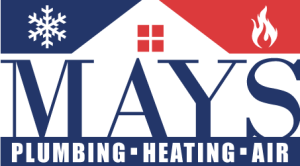Pipe Down: 10 Ingenious Plumbing Tips and Techniques for a Trouble-Free Home
Ensuring your home remains trouble-free doesn’t invariably require the intervention of a professional plumber. At times, all it takes are some simple and insightful DIY plumbing techniques. This article delves into ten such ingenious tips that to keep your domestic plumbing in top shape, and invariably, your home trouble-free. So, without further ado, let’s dive in!
1. Understand Your Home’s Plumbing Layout
Before taking on any DIY plumbing tasks, take the time to understand the layout of your homes’ plumbing system. This knowledge will not only make it simpler for you to identify potential problem areas but will also come in handy when you need to explain issues to professional plumbers. You can usually find diagrams of your home’s plumbing system in the owner’s manual or online,
2. Don’t Ignore Small Leaks
Minor leaks can quickly escalate, resulting in wasted water and potential structural damage. It’s always wise to repair small leaks promptly whether it’s a dripping tap or a leaky pipe. Basic leak repairs can usually be fixed with a wrench or plumber’s tape. Keep these tools handy and familiarize yourself with simple repair techniques to nip potential plumbing problems in the bud.
3. Regularly Inspect Your Appliances
Appliances such as your dishwasher, washing machine, and water heater are often linked to your plumbing system. Regular inspections can ensure these systems are working effectively and not causing any leakages or damage. Make sure to inspect hoses and connections for signs of wear and tear, and replace any that are worn out or damaged.
4. Use a Strainer to Avoid Clogs
Clog issues in your kitchen sink or bathroom drain are typically the result of food waste, hair, or other debris building up over time. A simple yet highly effective way to prevent this is by using a sink strainer. These handy devices trap potential clog culprits, preventing them from descending into your plumbing and causing blockages. Remember to clean your strainers regularly to ensure maximum efficiency.
5. Know Where Your Main Water Shut-Off Valve Is Located
In case of a plumbing emergency like a burst pipe, knowing the location of your main water shut-off valve can significantly reduce water damage. Ensure everyone in your household is also aware of this location and knows how to turn off the supply in case of an emergency. The shut-off valve is typically located in the basement, garage, or close to the water meter.
6. Protect Your Pipes in Winter
Cold winters can lead to frozen pipes, which can potentially burst and cause significant water damage. Insulate your pipes against freezing temperatures by using heat tape, pipe sleeves or even newspaper. Also, let your faucets drip slightly during extra cold periods to keep the water flowing and prevent it from freezing inside the pipes.
7. Be Mindful of What You Flush
One of the leading causes of toilet blockages is flushing non-flushable items down the toilet. Only human waste and toilet paper should go into your toilet bowl. Items such as baby wipes, cotton balls, or feminine hygiene products should be disposed of in a bin. Flushing inappropriate items not only causes annoying clogs but also can damage your plumbing over time.
8. Regularly Clean Your Showerheads and Faucets
Regularly cleaning your showerheads and faucets can prevent the buildup of lime and mineral deposits. This familiar maintenance practice keeps your fixtures efficient and extends their lifespan. You can use vinegar or commercially available cleaning solutions for dissolving and removing these deposits.
9. Use a Plunger Correctly
A plunger is a handy tool for resolving minor clogs in toilets, sinks, and bathtubs. However, it’s crucial to use it correctly for the best results. Ensure you have enough water in the sink or tub to cover the plunger’s bottom and keep a firm seal. Apply firm, steady plunges to clear the clog. If the clog persists after several attempts, it may be time to call a professional.
10. Regular Maintenance is Key
The most effective way to keep your plumbing system in excellent condition is through regular maintenance. This may include descaling your pipes, inspecting your septic system, or tuning your water heater. While some tasks can be carried out independently, hiring a professional plumber for an annual check-up can help diagnose and fix potential problems before they become severe issues.
Conclusion:
The condition of your plumbing can greatly influence the health and comfort of your home. With these handy tips and techniques, you can prevent common plumbing issues, save on water and repair costs, and keep your home running efficiently. Remember, if a plumbing issue seems too complicated or persistent, don’t hesitate to call in the professionals—it’s always better to be safe than sorry when it comes to your home’s plumbing!




